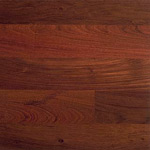Serving Upstate NY—VT—MA • For selections & prices, CALL or EMAIL US
Ipe
Wood Flooring Species
Scientific Name:
Tabebuia spp.
Other Names and Species:
Amapa
Brazilian Walnut
Cortez
Flor Amarillo
Greenheart
Guayacan Polvillo
Ipê
Lapacho Negro
Madera Negra
Peúva
Pink Ipê
Pink Lapacho
Piúva
Tahuari
Origin:
Brazil and throughout continental tropical America as well as in parts of the Lesser Antilles.
Appearance:
Ipe is also sometimes called “Brazilian walnut” (not to be confused with Imbuia, which shares the same nickname but is a completely different type of wood). The heartwood of ipe ranges from olive-brown to blackish, though it can have lighter or darker striping that is sharply demarcated from the whitish or yellowish sapwood. Ipe is a low-luster wood with an oily appearance, a fine-to-medium texture, and a grain that ranges from straight to very irregular.
Properties:
Along with its extreme hardness, strength, weight, density, and durability, ipe is also one of the most stable woods available. However, it is important to “over-dry” the wood in a kiln to avoid excessive shrinkage when installing.
Janka Hardness: 3684
As a flooring option, ipe is an incredibly hard and durable wood species. It is over ninety-one percent harder than merbau, roughly one hundred and twenty-six percent harder than wenge, and over two-thirds harder than santos mahogany’s ranking of 2200.
Workability:
Ipe is moderately difficult to work, given its hardness, especially with hand tools, and it has a blunting effect on most cutting edges. Pre-drilling is required when nailing the wood.
Principal Uses:
Ipe is ideal for wood flooring where durability and high shock resistance are needed, such as in industrial environments. It is also used in railroad crossties, heavy construction, tool handles, and decorative veneers.
Learn more about available grades of
Ipe hardwood flooring »





